Gardening in dry conditions presents unique challenges. When water is scarce, every drop counts. The right soil amendments for water retention can transform struggling gardens into thriving oases. Compost and biochar stand out as two powerful allies in the fight against drought conditions, working together to create soil that holds moisture efficiently while supporting healthy plant growth.
In this guide, we’ll explore how these natural amendments work, why they’re so effective, and exactly how to use them to maximize water retention in your garden. Whether you’re dealing with sandy soil that drains too quickly or looking to reduce your water usage, these sustainable solutions offer both immediate benefits and long-term soil improvement.
Understanding Soil Moisture Challenges
Before diving into solutions, it’s important to understand why some soils struggle to retain water. Soil moisture retention depends largely on soil structure, texture, and organic matter content. When these elements are out of balance, plants suffer from either too little or too much water.
Common Water Retention Problems
Different soil types present different moisture challenges:
- Sandy soils drain too quickly, causing water to pass through before plants can use it
- Clay soils hold water tightly but often become waterlogged or form hard crusts when dry
- Compacted soils prevent proper water infiltration and root growth
- Low organic matter soils lack the natural “sponge” effect that holds moisture
The ideal soil for most plants contains about 5% organic matter, which creates a balance of water retention and drainage. Unfortunately, many garden soils contain less than 2% organic matter, especially in urban or newly developed areas where topsoil has been removed or degraded.
Compost: Nature’s Water-Retention Miracle
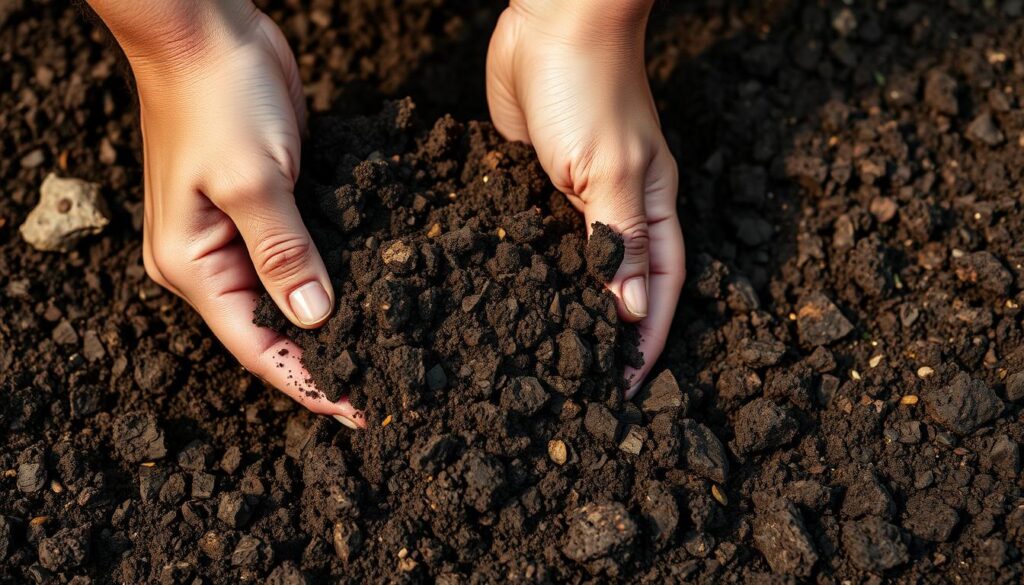
Compost is often called “black gold” by gardeners, and for good reason. This decomposed organic material transforms soil structure and dramatically improves water retention capabilities. Research shows that increasing organic matter by just 1% can help soil hold approximately 16,000 more gallons of water per acre.
How Compost Improves Water Retention
Compost works through several mechanisms to enhance soil’s relationship with water:
- Creates stable soil aggregates that form pore spaces for water storage
- Adds humus, which can hold up to 90% of its weight in water
- Supports beneficial soil microorganisms that produce water-binding substances
- Improves soil structure, allowing better water infiltration during rain or irrigation
- Reduces surface crusting and compaction that lead to runoff
Types of Compost for Water Retention
Not all compost is created equal when it comes to water retention properties:
| Compost Type | Water Retention Benefit | Best For |
| Plant-based compost | Moderate to high, low in salts | Most garden applications, sensitive plants |
| Manure-based compost | High, but can be high in salts | Established plants, use with caution in dry areas |
| Leaf mold | Very high (holds 500% its weight in water) | Moisture-loving plants, amending sandy soils |
| Worm castings | Excellent, with added microbial benefits | Seed starting, container gardens, high-value plants |
Applying Compost for Maximum Water Retention
For best results, incorporate compost thoroughly into the soil rather than just applying it to the surface. This ensures that water retention benefits extend throughout the root zone.
“Adding 2-3 inches of compost to sandy soil can increase water-holding capacity by 20-30%, extending the time between necessary waterings by several days.”
For established gardens, aim to add 1-2 inches of compost annually, working it into the top few inches of soil. For new garden beds, incorporate 3-4 inches of compost into the top 8-12 inches of soil before planting.
Biochar: Ancient Technology for Modern Water Conservation
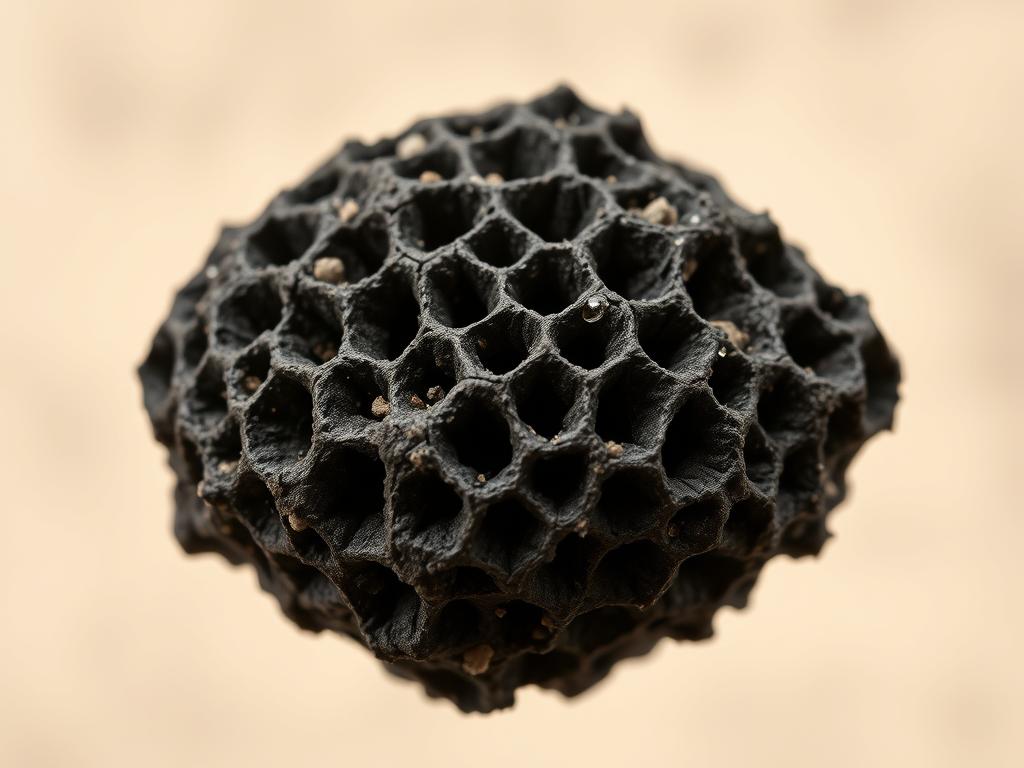
Biochar is a form of charcoal specifically made for soil improvement. This ancient soil amendment dates back thousands of years to the Amazon basin, where indigenous people created “terra preta” or black earth that remains fertile to this day. Modern research confirms biochar’s remarkable ability to enhance soil water retention.
How Biochar Retains Water
Biochar’s water retention capabilities come from its unique physical and chemical properties:
- Highly porous structure creates countless microscopic reservoirs for water storage
- Large surface area (up to 300 square meters per gram) provides ample water attachment sites
- Persists in soil for hundreds to thousands of years, offering long-term benefits
- Creates habitat for beneficial microorganisms that improve soil structure
- Reduces nutrient leaching, keeping fertilizers in the root zone longer
Research from the University of California found that adding biochar at 10% by volume increased water-holding capacity by up to 15% in sandy soils. Unlike compost, which breaks down relatively quickly, biochar remains stable in soil for centuries, making it a one-time investment in soil improvement.
Preparing Biochar for Garden Use
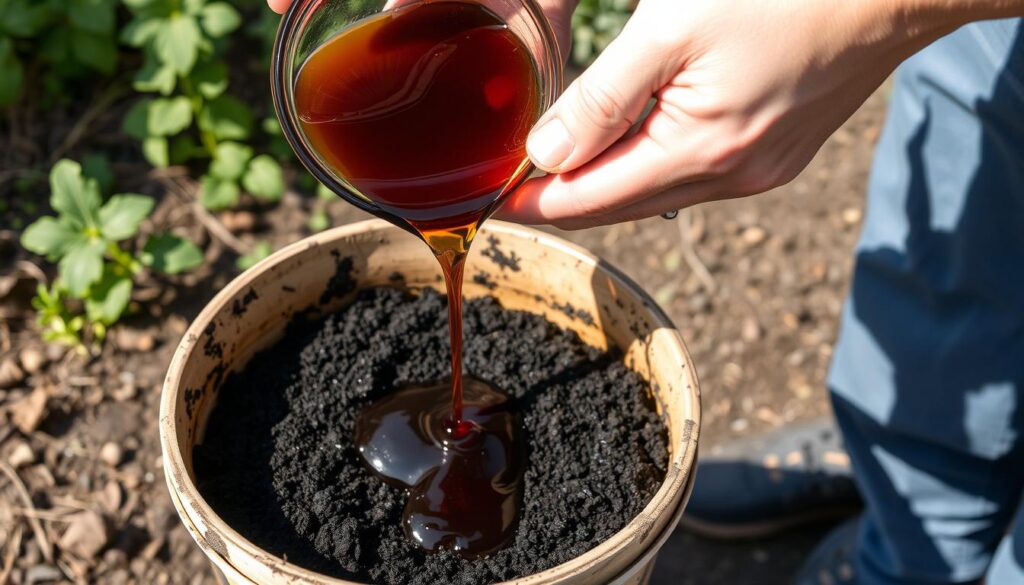
Raw biochar should never be applied directly to soil. Its high carbon content can temporarily bind nutrients, making them unavailable to plants. Instead, “charge” biochar before application:
- Soak biochar in compost tea or liquid fertilizer for 24 hours
- Mix with compost at a 1:1 ratio and let sit for 2 weeks
- Blend with aged manure and allow to cure for 1 month
This charging process fills biochar’s porous structure with nutrients and beneficial microorganisms, making it immediately beneficial rather than potentially harmful to plants.
Combining Compost and Biochar for Maximum Water Retention
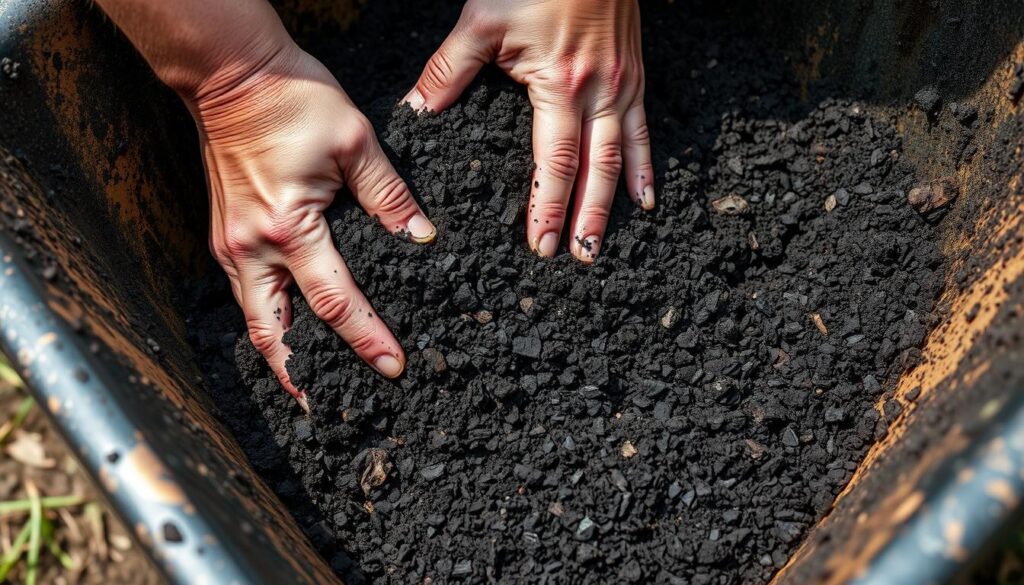
While both compost and biochar offer significant water retention benefits individually, their combined effect creates a synergy that exceeds the sum of their parts. Research from Washington State University found that soil amended with both compost and biochar retained 40% more water than unamended soil, compared to 25% for compost alone and 15% for biochar alone.
Optimal Mixing Ratios
For most garden applications, the following ratios work well:
| Soil Type | Compost Ratio | Biochar Ratio | Expected Benefit |
| Sandy soil | 30-40% | 5-10% | 30-40% increase in water retention |
| Loamy soil | 20-30% | 3-5% | 20-30% increase in water retention |
| Clay soil | 20-30% | 2-3% | Improved drainage and 15-20% better water availability |
Application Methods for Different Garden Types
The best application method depends on your garden type:
For Vegetable Gardens
- Mix amendments thoroughly into top 8-12 inches of soil
- Apply annually before spring planting
- Use higher rates in planting holes for heavy feeders
For Perennial Beds
- Apply as 2-3 inch top dressing around plants
- Gently work into soil surface without disturbing roots
- Repeat annually in early spring or fall
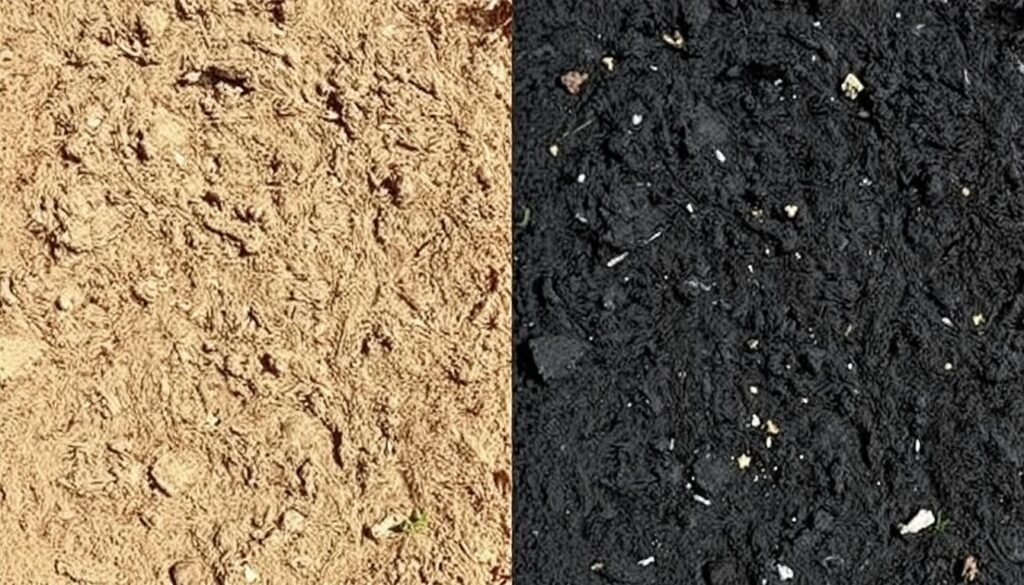
For container gardens, a mix of 30% compost, 10% biochar, and 60% quality potting soil creates an excellent water-retentive growing medium that reduces watering frequency by up to 50%.
Additional Strategies to Enhance Soil Water Retention
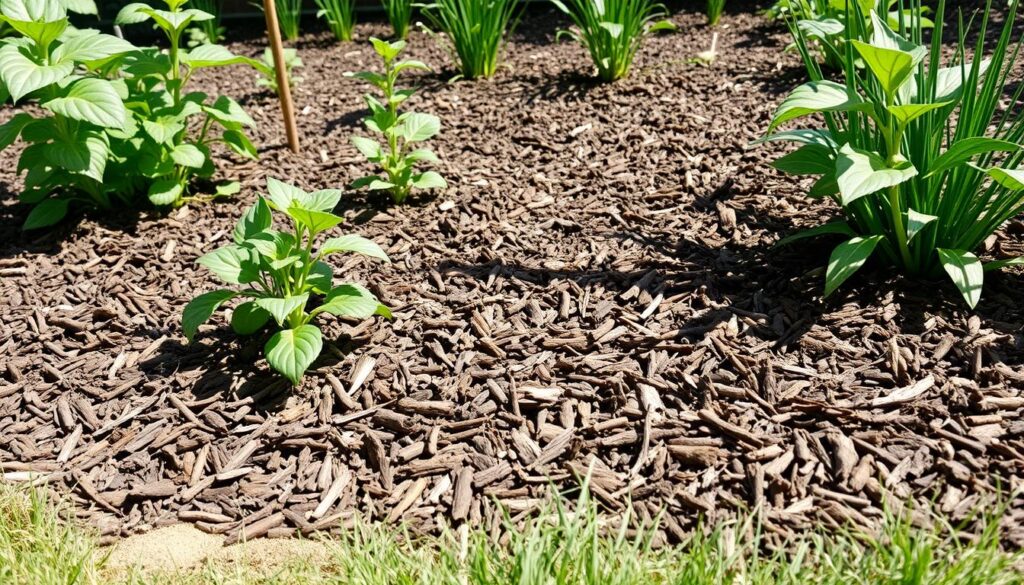
While compost and biochar form the foundation of water-retentive soil, several complementary practices can further enhance their effectiveness:
Mulching for Moisture Conservation
A 2-4 inch layer of organic mulch can reduce evaporation by up to 70%, dramatically extending the benefits of your soil amendments. Effective mulch options include:
- Wood chips or bark (best for trees and shrubs)
- Straw or hay (ideal for vegetable gardens)
- Leaf mulch (excellent for woodland gardens)
- Grass clippings (good for quick application, but apply thinly)
Apply mulch after soil has warmed in spring, keeping it 1-2 inches away from plant stems to prevent rot. Replenish as needed to maintain the recommended depth.
Cover Crops for Soil Building
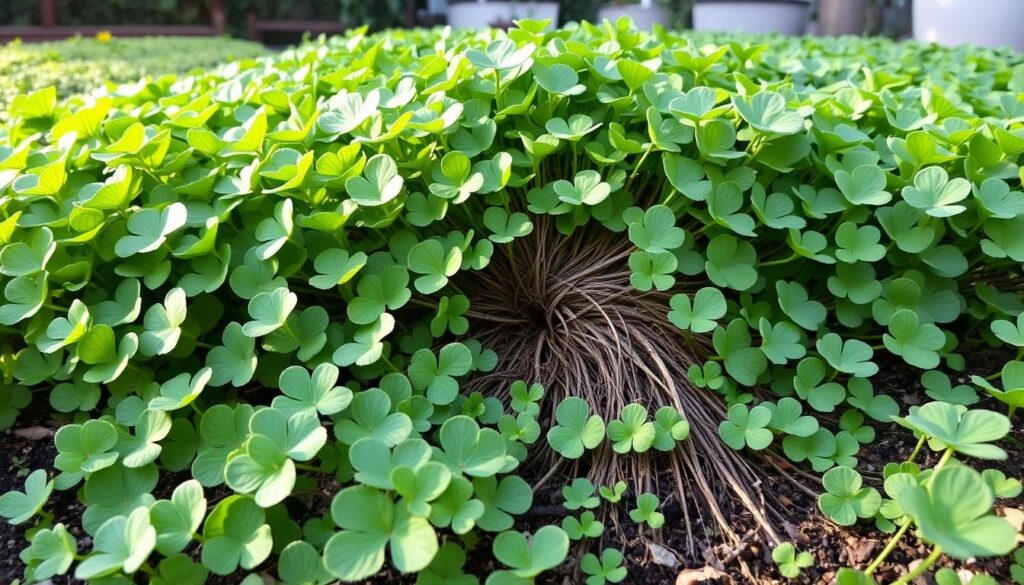
Planting cover crops during off-seasons helps build soil organic matter and improve structure. Cover crops with deep taproots, like daikon radish, create channels for water infiltration, while fibrous-rooted grasses build soil aggregates that hold moisture.
For summer gardens, plant fall cover crops like:
- Cereal rye (excellent for building organic matter)
- Crimson clover (adds nitrogen while improving soil structure)
- Hairy vetch (deep roots break up compaction)
Efficient Irrigation Practices
Even the best soil amendments can’t compensate for wasteful watering practices. Maximize the effectiveness of your soil improvements with:
- Drip irrigation that delivers water directly to the root zone
- Watering deeply but infrequently to encourage deep root growth
- Morning watering to reduce evaporation losses
- Rainwater harvesting to capture free water for gardens
Consider installing a simple moisture meter to monitor soil conditions and avoid both under and overwatering. This ensures your soil amendments can perform at their best.
Transforming Your Garden with Water-Retentive Soil
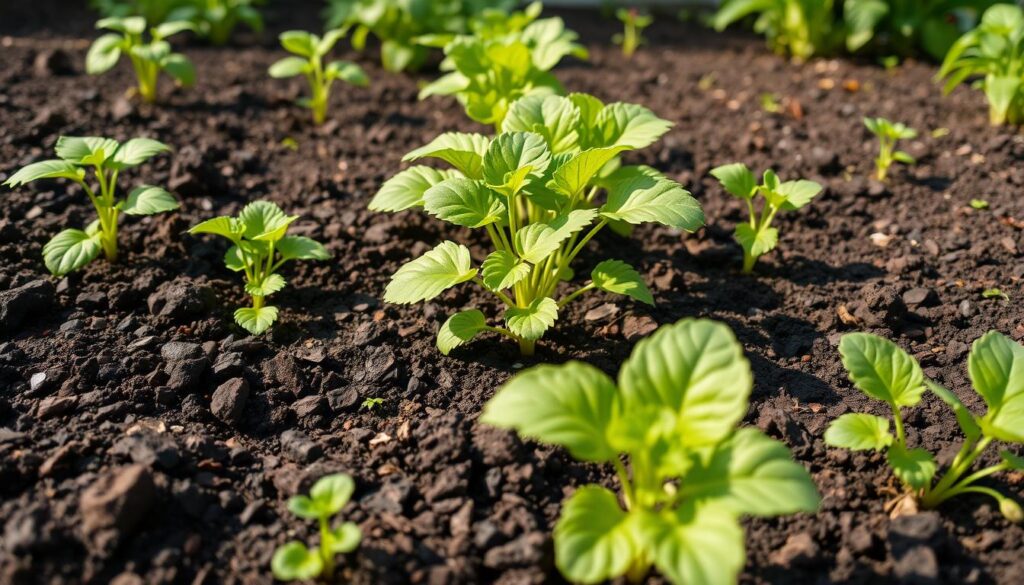
Improving soil water retention isn’t just about saving water—it’s about creating healthier plants and more resilient gardens. By incorporating compost and biochar as soil amendments for water retention, you’re making a long-term investment in your garden’s success.
Start with a soil test to understand your current conditions, then apply the appropriate amendments based on your soil type and garden needs. Remember that building healthy soil is a journey, not a destination—annual applications of organic matter will continue to improve your soil’s structure and water-holding capacity over time.
With these practices in place, you’ll not only reduce your water usage but also grow stronger, more productive plants that can better withstand periods of drought. Your garden will become more sustainable, requiring fewer inputs while producing better results.
Want to Learn More About Water-Smart Gardening?
Download our free guide “Advanced Water Conservation Techniques for Home Gardens” for more detailed strategies to maximize moisture retention and minimize water usage in your garden.
Frequently Asked Questions About Soil Amendments for Water Retention
How long does it take to see improvements in water retention after adding amendments?
You’ll notice immediate improvements in water retention after adding compost and properly charged biochar. However, the full benefits develop over time as soil biology responds to the amendments. Expect to see progressive improvement over the first 3-6 months, with continued enhancement for years, especially with biochar which remains stable in soil for centuries.
Can I add too much compost or biochar to my soil?
Yes, it’s possible to overdo soil amendments. Too much compost (more than 30-40% of soil volume) can lead to excess nitrogen and potential nutrient imbalances. Excessive biochar (more than 10-15% by volume) may make soil too light and potentially bind nutrients. Follow recommended application rates and monitor plant response.
Are there any plants that don’t benefit from these water-retentive amendments?
Plants adapted to very dry conditions, like many cacti and succulents, may not need additional water retention and could potentially suffer from too much moisture. Similarly, plants that require sharp drainage, such as lavender and rosemary, benefit more from moderate amendment rates. Always research the specific needs of your plants.
How do I know if my soil needs water retention amendments?
Signs that your soil would benefit from water retention amendments include: quick drying out after rain or irrigation, water running off rather than soaking in, plants wilting frequently despite regular watering, and soil that feels gritty or sandy. A simple jar test can help determine your soil texture, while a soil test will provide more comprehensive information.
Will is a vertical gardening enthusiast and sustainable cultivation specialist with a passion for helping people grow fresh food in small spaces and dry climates. With years of hands-on experience testing smart irrigation systems, optimizing urban gardens, and exploring eco-friendly solutions, this author shares clear, practical tips to turn any corner into a productive garden. Whether on a sunny balcony or in a compact backyard, Will helps readers save water, maximize space, and enjoy healthy harvests year-round. When not tending to his plants, you’ll find him sipping herbal tea and sketching ideas for new sustainable projects.

